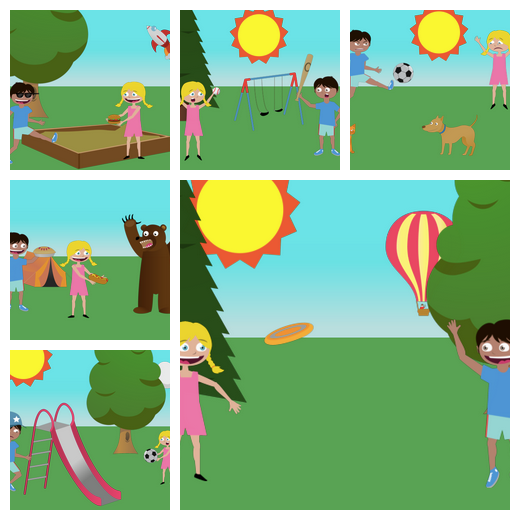Canonical correlation inference for mapping abstract scenes to Text
Description
This project focuses on the use of canonical correlation analysis to map images and text to a shared space, and then use this shared space to map unseen images to corresponding captions. The dataset we use is abstract scene dataset, developed at Microsoft, for which we show a couple of pictures below.

Paper
Click here for the following paper.
@inproceedings{papasarantopoulos-18,
title={Canonical Correlation Inference for Mapping Abstract Scenes to Text},
author={Nikos Papasarantopoulos and Helen Jiang and and Shay B. Cohen},
booktitle={Proceedings of {AAAI}},
year={2018}
}
Some notes
Click here to download the ranked captions.
The format of the file is as follows. There are 300 lines, a line per ranked image. Each line has fields separated by ^. The fields are as follows:
- The image name in the <a href=https://vision.ece.vt.edu/clipart/>abstract scene dataset</a> (in the RenderedScenes/ directory)
- Gold-standard caption 1
- Gold-standard caption 2
- Gold-standard caption 3
- Gold-standard caption 4
- Gold-standard caption 5
- Gold-standard caption 6
- Gold-standard caption 7
- Gold-standard caption 8
- Gold-standard caption that was rated
- The caption from Ortiz et al. (statistical machine translation system) that was rated
- The CCA caption that was rated
- Average rating (by 2-3 subjects) for the gold caption (a number between 1 - least relevant and 5 - most relevant)
- Average rating for the SMT caption
- Average rating for the CCA caption
Not all images have 8 gold-standard captions, so some can be empty.
Click here to download the splits that we used for the training/development/tuning/test sets. These are the same splits as were used by Ortiz et al. Each file in this gzipped tarball contains a list of pointers to the scenes that were used for the relevant set. The human-ranked images were taken from the test set (first 300 images).